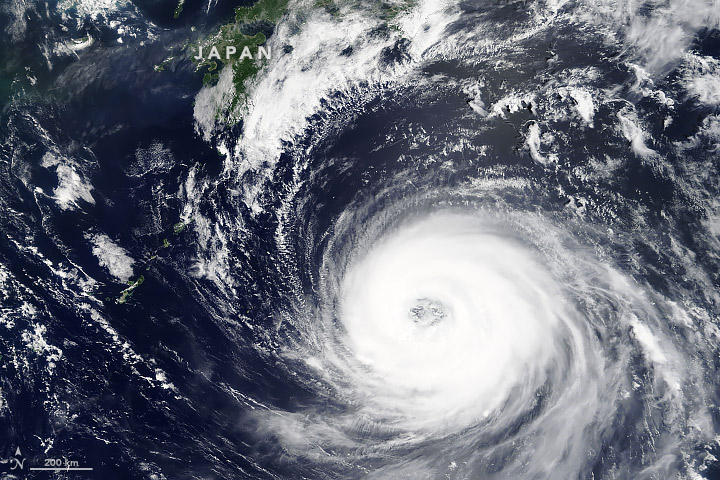Typhoon Soulik heads toward Japan

Today’s Image of the Day from NASA Earth Observatory shows Typhoon Soulik as it approached Japan on Monday. Typhoon Soulik heads toward Japan
The powerful storm had maximum sustained winds of 115 miles per hour, and was expected to move over the Amami Islands before heading north toward the Korean Peninsula.
Japan may endure a second storm later this week, as Typhoon Cimaron intensifies in the Northwest Pacific.
This image was captured by the Moderate Resolution Imaging Spectroradiometer (MODIS) on NASA’s Terra satellite on August 20, 2018. Typhoon Soulik heads toward Japan shown in image above.
Japan (Japanese:, Nippon (listen) or Nihon (listen)) is an island country located in East Asia. It is bordered by the Sea of Japan to the west and the Pacific Ocean to the east, and spans more than 3,000 kilometers (1,900 mi) along the coast of the continent from the Sea of Okhotsk in the north to the East China Sea and Philippine Sea in the south. Part of the Pacific Ring of Fire, Japan encompasses a stratovolcanic archipelago of about 6,852 islands, with five main islands (Hokkaido, Honshu, Kyushu, Shikoku, and Okinawa) comprising 97% of the country’s total area of 377,975 square kilometers (145,937 sq mi).
Japan is officially divided into 47 prefectures and traditionally into eight regions. Approximately two-thirds of the country’s terrain is mountainous and heavily forested, and less than one-eighth of land is suitable for agriculture. Consequently, Japan is among the most densely populated and urbanized countries in the world, with over 90% of its population living in urban areas. The largest of these is the metropolitan area centered on the capital city of Tokyo, which is the most populous in the world and home to more than 38 million people. Japan itself is the world’s eleventh most populous country with a population of 126.2 million, of which 97.8% are ethnically Japanese.
—
By Chrissy Sexton, Earth.com Staff Writer
Image Credit: NASA Earth Observatory
News coming your way





















